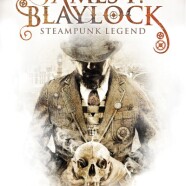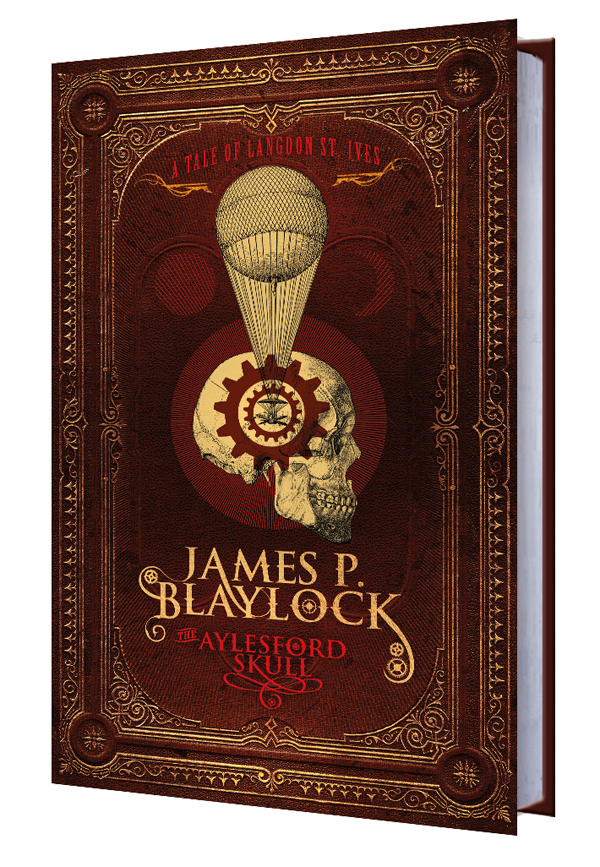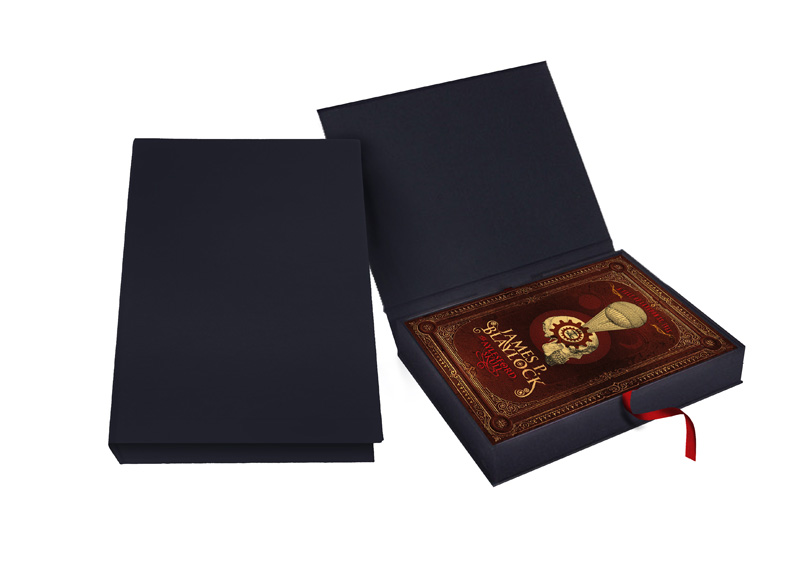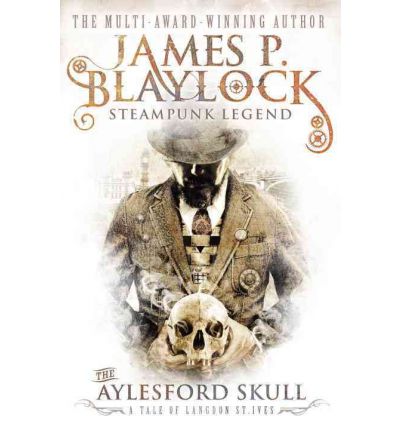James P. Blaylock: The Aylesford Skull Blog Tour
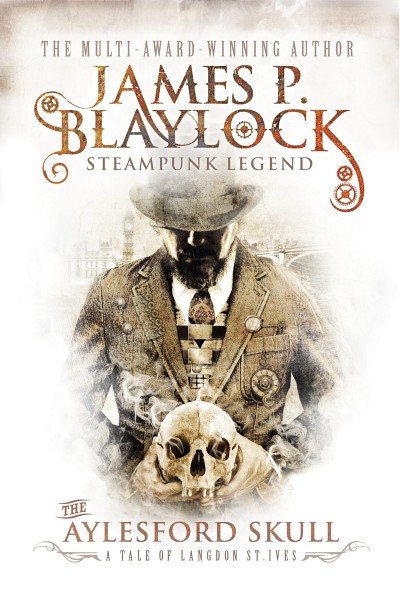 Readers might recall that I recently reviewed The Aylesford Skull by Steampunk Legend James P. Blaylock. With immense gratitude to Mr. Blaylock and Titan Books, we’ve got a special treat today. SciFiFX was invited to be a part of The Aylesford Skull Swashbuckling Blog Tour to help promote Mr. Blaylock’s first steampunk novel in 20 years. So without further adieu…
Readers might recall that I recently reviewed The Aylesford Skull by Steampunk Legend James P. Blaylock. With immense gratitude to Mr. Blaylock and Titan Books, we’ve got a special treat today. SciFiFX was invited to be a part of The Aylesford Skull Swashbuckling Blog Tour to help promote Mr. Blaylock’s first steampunk novel in 20 years. So without further adieu…
* * *
SciFiFX: What made you first decide to write?
James P. Blaylock: Like most writers I was reading and writing at an early age, around 10 years old, when for some reason books became phenomenally attractive to me – the covers of books, the frontispiece, and the title page, particularly. I began borrowing books from my mother’s library, books with black covers at first, and with red or gold lettering. I found that I was fond of the smell of old paper. I started out with The Return of Sherlock Holmes and followed that with Ivanhoe and Mrs. Astor’s Horse, all of which were tough going. Sherlock Holmes, however, really got me, especially the atmosphere and the tone. I shifted to Twain and Steinbeck and my love of these things redoubled, and I began to spend time monkeying up first pages of Steinbeckesque stories, always beginning with two paragraphs of the sun coming up over the Salinas Valley and then going nowhere, neither the sun nor the story. When I was eleven, a friend of mine regaled me with a description of a film he’d seen called Macabre, which I assumed was spelled McCob, and which put me immediately in mind of walking skeletons smoking corncob pipes. The image struck me as fearful and attractive in equal measure. I went home and wrote the story of a hideous, pipe-smoking skeleton that terrorizes a family in a farmhouse. I can’t remember that the skeleton had any particular motivation. I can remember that he stalked around outside in the darkness peering in at windows. By that time I was hooked. I loved to read and I loved to write. I’d become a literary animal, for better or worse.
SFFX: Any teasers about upcoming projects you’re working on?
JPB: A few months back I published a novel titled Zeuglodon, the True Adventures of Kathleen Perkins, Cryptozoologist. It was so much fun to write that I’m engaged in working up another Perkins novel, this one tentatively titled King Solomon’s Ring. I’m not sure how to describe it, except that I imagine a sort of Phil Dickian take on a desert island adventure: Robinson Crusoe meets Martian Time Slip. The Aylesford Skull also seems to want a sequel of some sort, so I’m working up ideas for that, too. Also, I recently finished a short novel that was purchased by Subterranean Press, titled The Pagan Goddess. I can’t begin to say anything sensible about the plot, but I believe that readers will find it amusing.
SFFX: What is your favorite book (or books) of all time, not written by you?
JPB: Huckleberry Finn, The Wind in the Willows, and Treasure Island.
SFFX: Of your work, which are you most proud of?
JPB: That’s a tough question. As the years pass and I gain some objectivity, I can see that some of my books are better than others, although readers are free to disagree with my sometimes shifting assessments and often do, just as they disagree with each other. I have a particular fondness for my first book, The Elfin Ship, for my third book, The Digging Leviathan, for The Last Coin, All the Bells on Earth, Zeuglodon, and (as is always the case) my most recent, The Aylesford Skull.  That doesn’t narrow things down much, I’m afraid.
SFFX: Which authors influenced you the most?
JPB: Mark Twain, Robert Louis Stevenson, Laurence Sterne, Patrick O’Brian, and others. Some were temporarily influential – P. G. Wodehouse, Kenneth Grahame, William Gerhardie, Verne and Wells, for instance; others (the ones I mentioned above) have had a lasting influence. More names are coming into my mind, but I’m going to close the door on them before this becomes a catalogue.
SFFX: For newcomers who have just discovered you, which stories would you suggest new readers begin?
JPB: For readers of alternate world fantasies, The Elfin Ship and its sequel, The Disappearing Dwarf. For fans of contemporary, mainstream fantasy, The Last Coin and Knights of the Cornerstone. For Steampunk fans, The Aylesford Skull and Homunculus. For young readers, The Elfin Ship and Zeuglodon. For… I’ll close that door, too.
SFFX: Where do you see the trends of your genre going in the next 5 years?  10?  20?
JPB: If we’re talking about Steampunk, I’m not certain. It seems to me that everything fashionable comes to an end in fairly short order. Steampunk has been a long time coming. Tim Powers, K.W. Jeter, and I began writing and publishing it in the 1970s, a good 35 years ago. (Scarcely seems possible.) It’s everywhere today, which qualifies it as fashionable, and so it might be on the edge of dwindling.  On the other hand, the literature and the costumes and the art sometimes rise above the merely fashionable, so I’ve got some hope that it’s got another decade in it, and that elements of it might become lasting elements of the culture. I’m fairly sure that I’ll keep writing it one way or another.
SFFX: Which trends to do you wish would come back?
JPB: Any trends that are of lasting value and that might replace the ugly, plasticky, barren, shallow, throwaway elements of our culture, books included, in which everything’s got its fifteen minutes in the spotlight because it’s not worth a millisecond more than fifteen minutes. Bill Bryson made the comment in his book Neither Here nor There that “we used to build civilizations, but now we build shopping malls.â€Â  I hope we’re not forever condemned to build shopping malls, metaphorically speaking. Wait… do you mean trends in books? Sorry. I want a return of the novels of the 1950s: The Seagulls Woke Me, Up the Down Staircase, Sail a Crooked Ship, that kind of thing. I’m apparently in a nostalgic mood. (A friend of mine once said, “You can be kind of a crud mudgeon.â€Â I found that hilariously funny and also true in a very small way.)
SFFX: Are there any trends you won’t miss now that they’ve passed by?
JPB: I’m not sure that they’ve passed by, but I’d be happy enough to see fewer – a lot fewer – vampire, werewolf, and zombie things: stories, films, TV programs. Unless of course they’re particularly good…
SFFX: The covers of your books deservedly say “Steampunk Legend.”  How does it feel to be a “founding father” of the genre as we know it today?
JPB: It feels odd and very good in equal measure. The funny thing is that K.W., Tim, and I had no idea that anything would come of our early efforts at writing the historical (in some sense) stories and novels that would later come to be known as Steampunk. My first Steampunk novel, Homunculus, was published years before K.W. would coin the term in a letter to Locus magazine. It wasn’t until the 1990’s, when the University of Bologna invited me to a Steampunk conference that featured my work (as an example of dystopian revisionist history), that it dawned on me that something had happened. Here we are 20 years later, and the phenomenon still seems to be gaining steam. (Ha ha.) Very bizarre. I might buy a beaver hat to celebrate.
Thanks! Jim Blaylock
* * *
And thank you, Mr. Blaylock. It’s truly an honor and a pleasure to be able to pick your brain, even for a short time.
Special thanks to Tom Green at Titan Books for reaching out to us so we could join in the fun, and for his work behind the scenes.
This article was posted as part of The Aylesford Skull Swashbuckling Blog Tour celebrating the release of James P. Blaylock’s first full-length steampunk novel in twenty years. For the opportunity to win a limited edition of The Aylesford Skull in a jacketed, signed hardcover with a unique jacket design, just tweet “I would like a limited edition of the Aylesford Skull @TitanBooks #Blaylockâ€Â.

